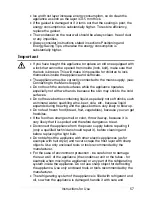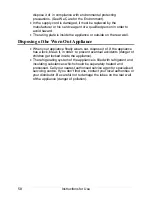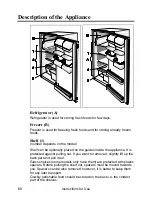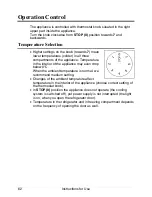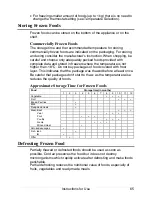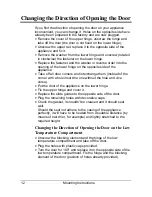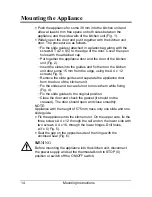
Instructions for Use
70
•
Manually defrost the increased ice layer. See "Ice Formation on the
Inner Back Wall".
Noise
Cooling in refrigerating-freezing appliances is enabled by the
refrigerating system with compressor, which produces noise. How
noisy the appliance is depends on where it is placed, how it is used and
how old the appliance is.
•
During the operation
of the compressor the noise of liquid is heard
and when the compressor is not operating, the refrigerant flow is
heard. This is a normal condition and it has no influence whatsoever
on the lifetime of the appliance.
•
After starting the appliance,
the operation of the compressor and
the refrigerant flow may be louder, which does not mean that
something is wrong with the appliance and it has no influence on the
lifetime of the appliance. Gradually the noise is reduced.
•
Sometimes
unusual and stronger noise
is heard, which is rather
unusual for the appliance. This noise is often a consequence of
inadequate placing.
−
The appliance shall be placed and levelled firmly on solid base.
−
It should not touch the wall or kitchen units standing next to it.
−
Check the accesories in the interior of the appliance, they should
be placed correctly in their positions; also check the bottles, tins
and other vessels that might touch each other and rattle.
Bulb Replacement
Before replacing the light bulb,
disconnect the appliance form the
power supply.
Press the cover at the rear side (in the
arrow 1 direction) and remove the
plastic cover (in the arrow 2 direction).
Replace the bulb with a new one (E14,
max. 10 W).
Don't forget: the old bulb does not belong to organic waste.
Light bulb is consuming good therefore our in-guarantee service
does not relate to it.
:(5(6(59(7+(5,*+772$/7(57+(
63(&,),&$7,216:,7+12,1)/8(1&(217+(
23(5$7,212)7+($33/,$1&(


